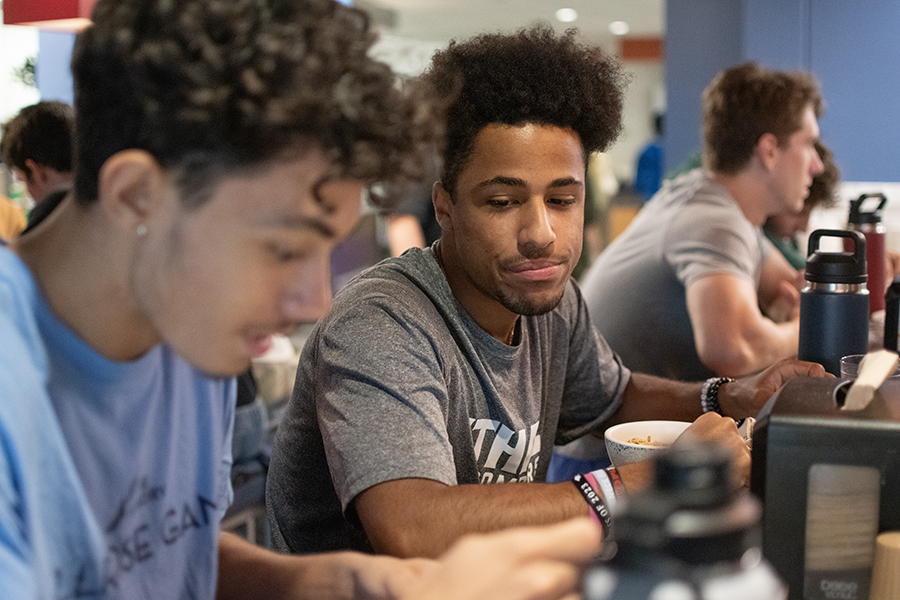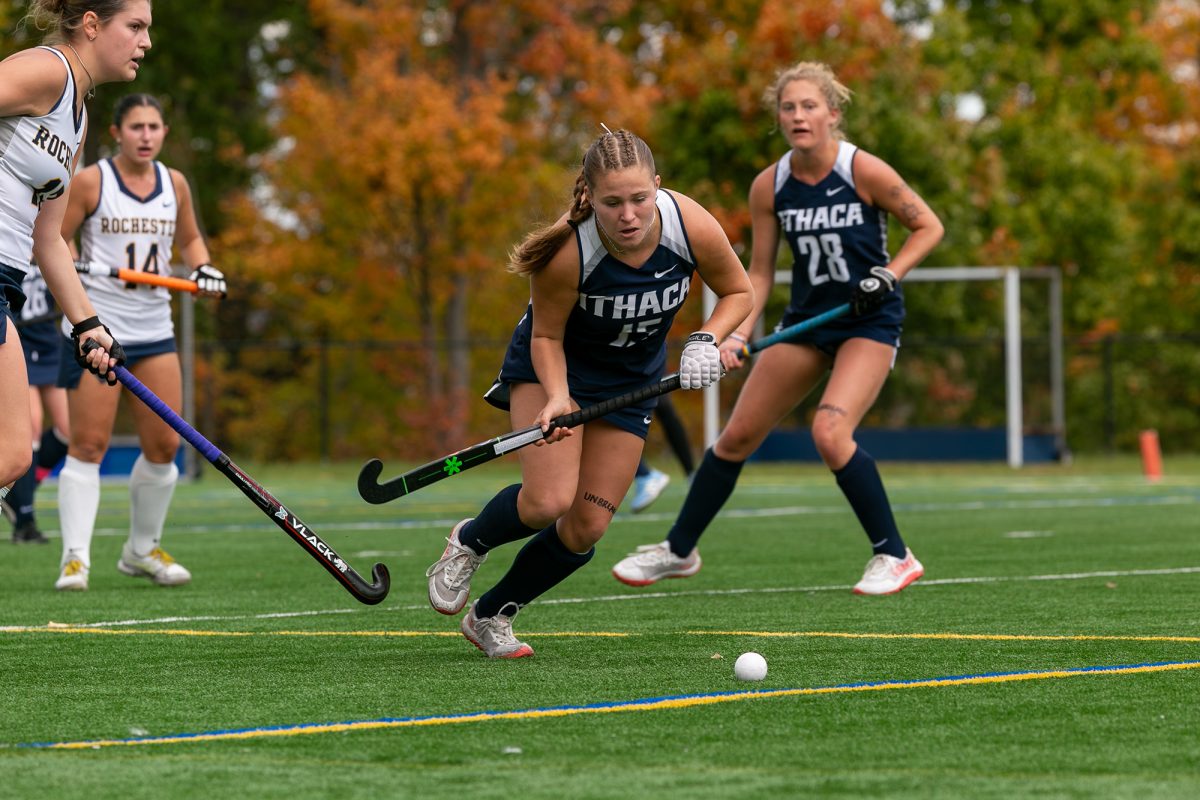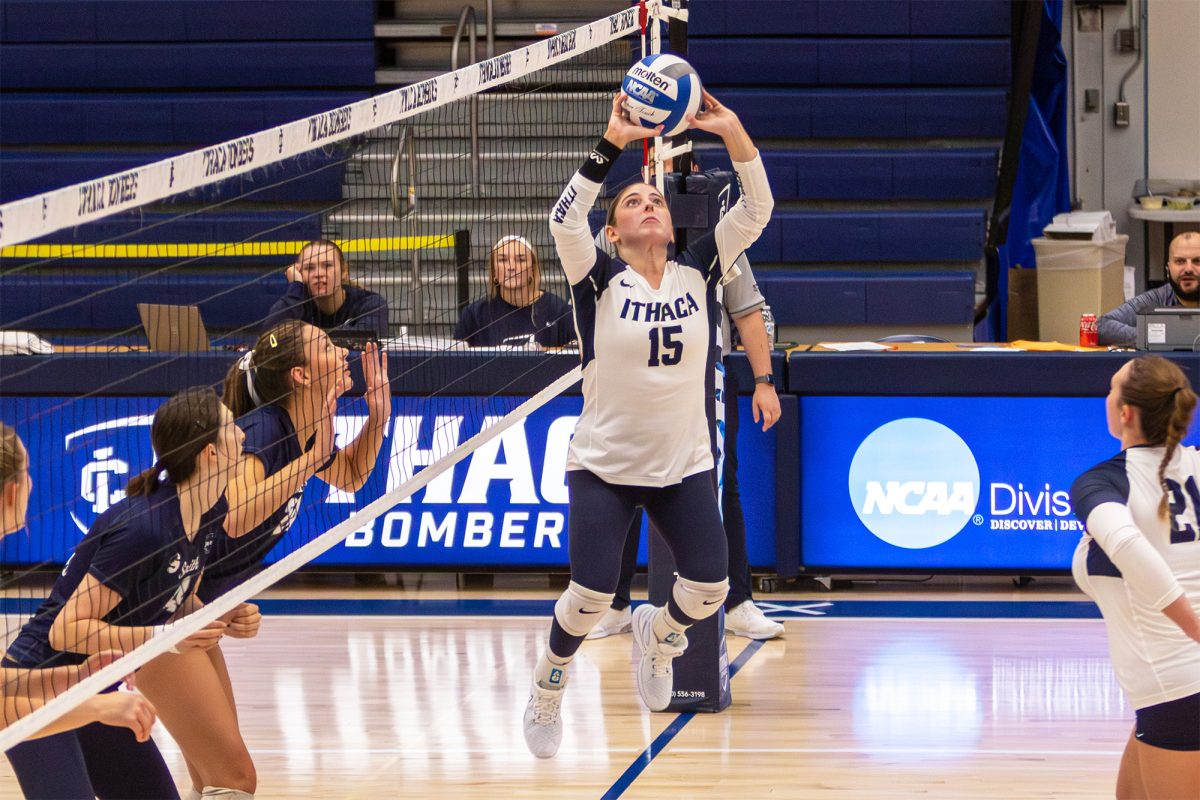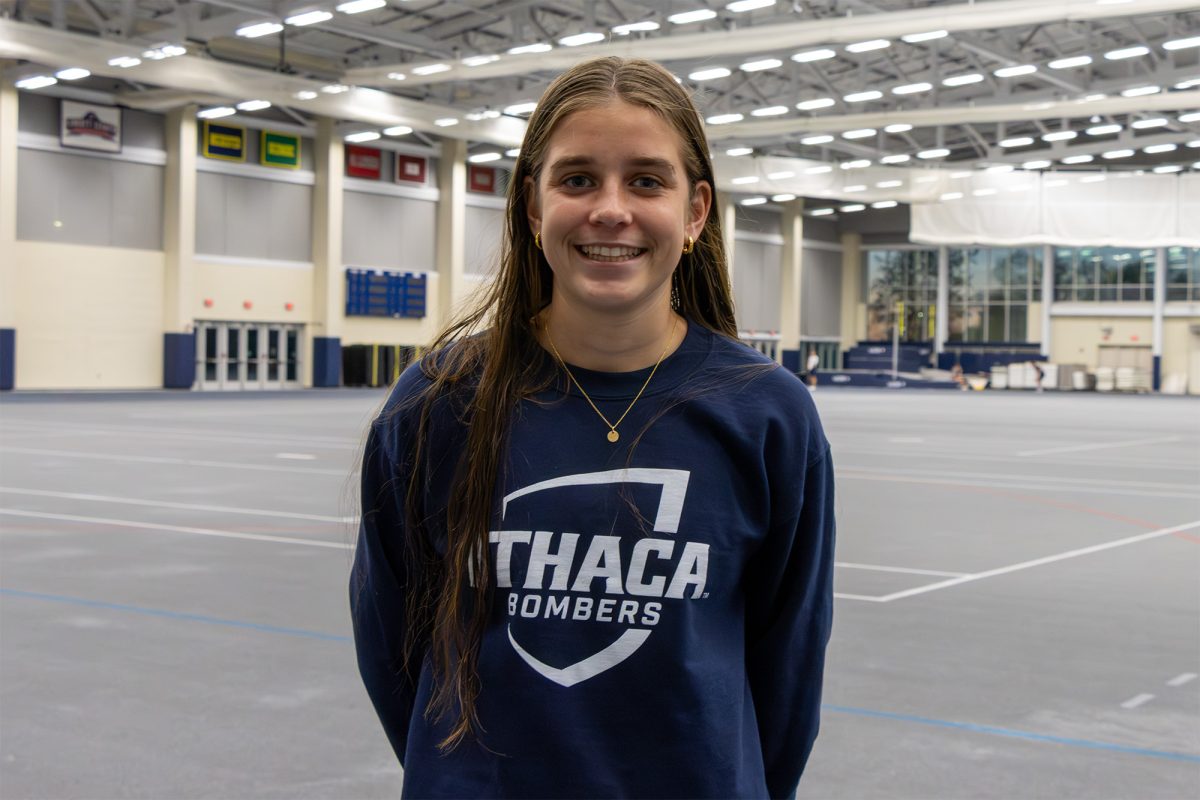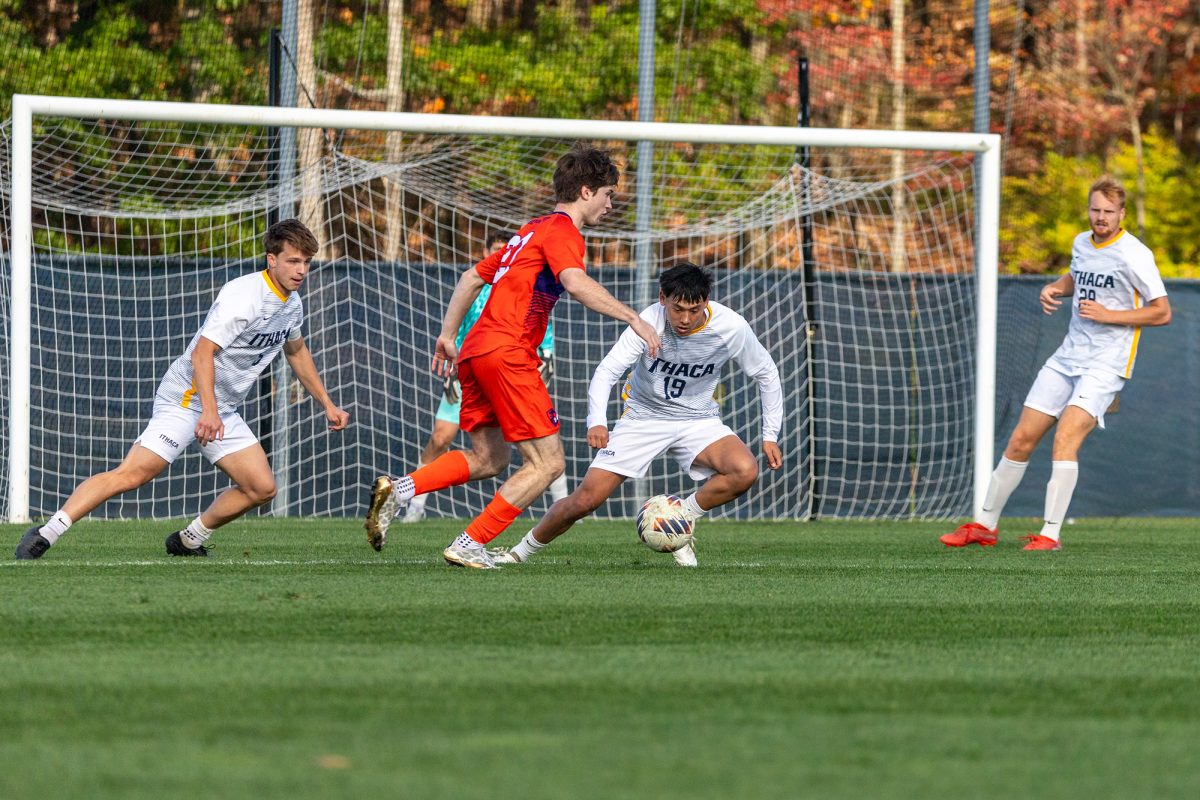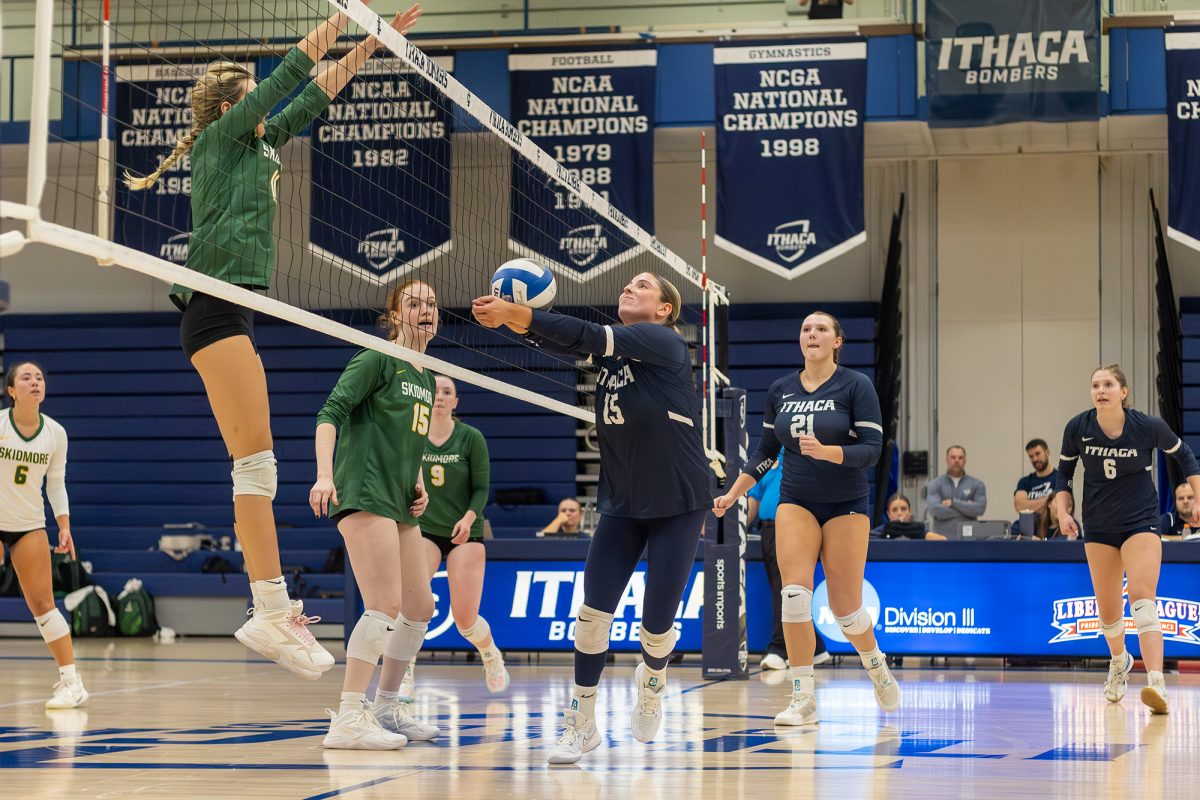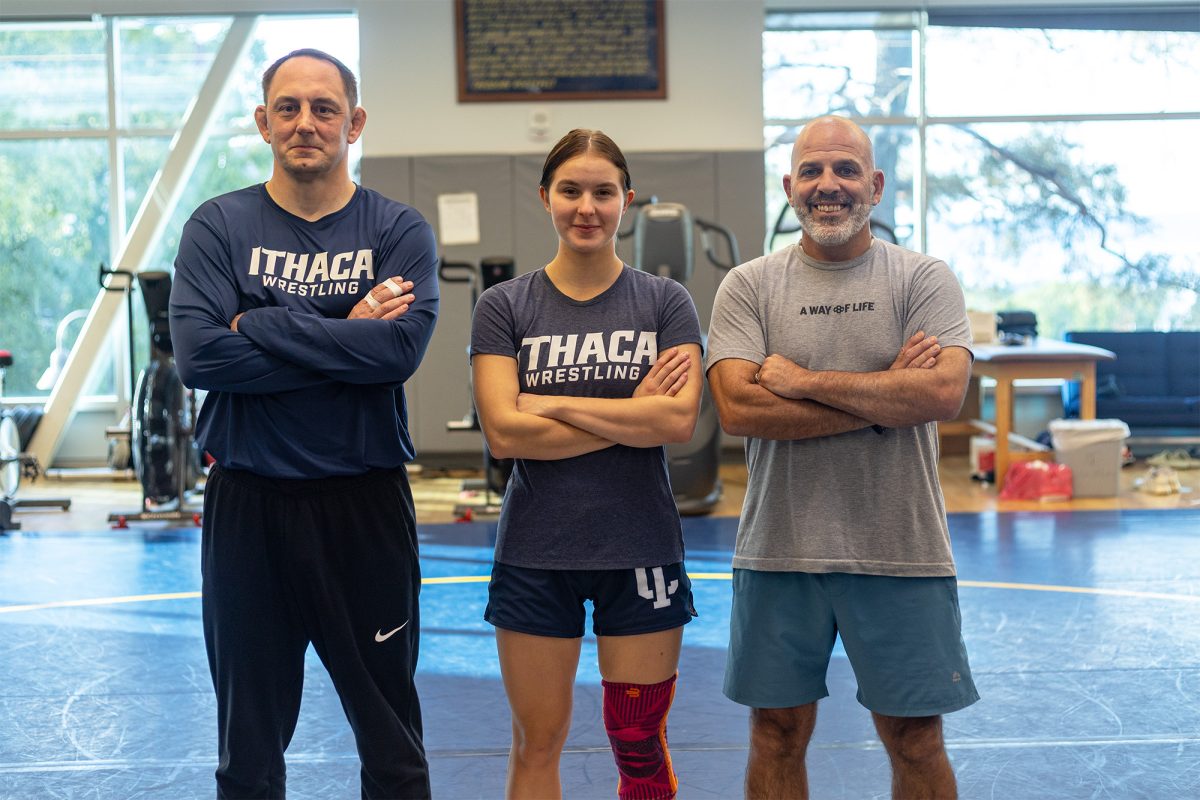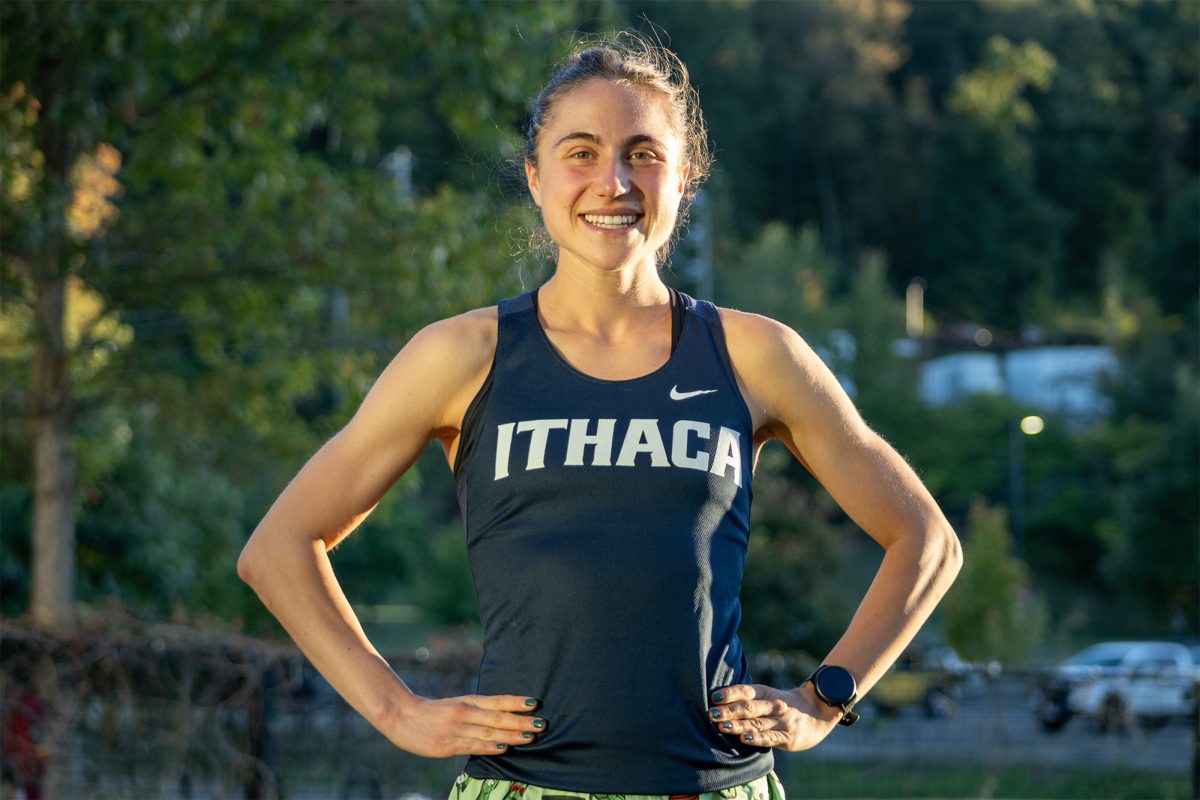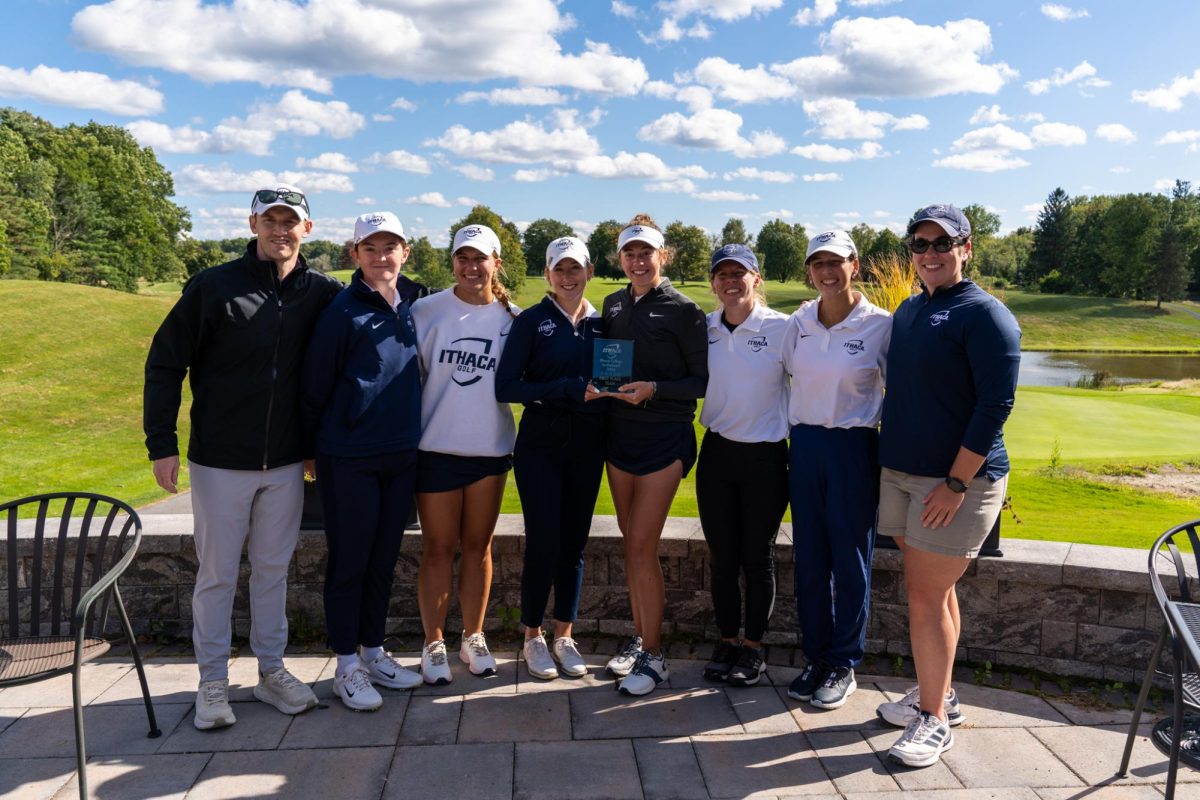Following a history of notoriously long lines and limited hours of operation, student-athletes at Ithaca College have an innovative new option for dining this fall as the first semester with the meal exchange program goes into effect.
A change created to keep the dining halls as uncrowded as possible, the meal plan option also allows for a more flexible eating schedule. Meal exchanges allow students to use a meal swipe for many of the other on-campus retail dining areas, like the Dailies Cafe in the Roy H. Park School of Communications and the Scribe Cafe in the Gannett Center library.
Reginald Briggs, senior director of Dining Services at the college, was one of the many people who worked to implement the meal exchange program. He said the plan was designed largely to relieve dining staff of the student crowds.
“Campus Center [dining hall] got too crowded last year,” Briggs said. “We wanted to get through breakfast and lunch without the huge crowds. … The meal changes were not implemented specifically for athletics but, if they do help, that is just another benefit.”
Unlike many schools at the Division I level, athletes at the college have the same dining options as any other student. The influx of people in dining halls last school year became an issue for athletes, who have strict lift, travel, game and practice times, all while balancing their nutrition. According to Dartmouth College’s nutritional guidelines, athletes should be eating 6–7 meals per day — including proteins, carbs and healthy fats — to speed up metabolism and maintain energy.
Because of the strains of training, it is crucial for athletes to maintain a diet that is optimal for fueling and muscle recovery. Although it might vary depending on their sport, all athletes are expected to follow a well-balanced diet to perform optimally. For Briggs, that is something he said the dining department has worked toward meeting. The Thrive Menu — served at the two primary dining halls as well as Towers Eatery — is all food free of the top-nine allergens and always includes cold proteins and clean carbs.
If athletes are not fueling correctly, they can be significantly more prone to injuries and have trouble sustaining energy during training. Briggs said he has worked directly with athletes to meet their dietary needs, but the decision to eat healthy is ultimately up to them.
“I talk to athletes who are struggling and we always go with Thrive,” Briggs said. “When we close and all of the burgers and fries are gone but there is still chicken caesar salad left, [that was their choice.] I can only provide the food. They have to make those good choices on what to eat.”
Naomi Clauhs, a first-year student on the volleyball team, is relying on a full meal plan this semester, which includes 24 meals a week and up to 21 exchanges depending on the plan. She said retail dining on campus has made fueling for her sport significantly easier when the dining halls are unavailable.
Clauhs said the menu options at the college’s dining halls have been able to meet her team’s needs adequately as in-season athletes.
“I feel like there’s a lot of balanced options in the dining hall and for the people on the team that have more dietary restrictions,” Clauhs said. “There’s a lot of options for everyone that everyone’s happy with.”
At the college, only senior students are eligible to live off-campus, which can provide more flexibility in terms of dining. Noah Downing, a senior on the men’s basketball team, is living off-campus with a partial meal plan which includes five meals a week, but can include up to 14 depending on what plan the athletes might have.
Rather than relying on it entirely, Downing said he uses his partial meal plan to supplement his meals from home or to grab a quick bite when his schedule is packed.
“We’ll have lift in the morning and I don’t have time to go sit in the dining hall [before going to class],” Downing said. “After lift, I need to get something quick and onto the next thing.”
Similar to Clauhs, Downing said he has used more Bomber Bucks when the dining hall is closed. However, Downing said he has to be strategic about how he uses them, which can be an inconvenience in situations where on-campus dining might be his only option.
“They took away [Bomber Bucks], I think we have half of the [Bomber Bucks] we had last year,” Downing said. “I utilized that a lot and now I’m saving more now.”
Vic Brown, strength and conditioning head coach, leads nutrition meetings for each team on campus before the start of their respective seasons. In those meetings, teams discuss how athletes should be treating their bodies before and after training in terms of nutrition, hydration and getting adequate rest.
Brown said that after spending time around different athletes, he will potentially see the impact of different dining plans in terms of nutrition and fueling.
“I don’t think we’ve had enough of a sample size to see its full effect, but I think [the new dining options are] a creative idea and should be good in meeting everyone’s needs,” Brown said.
From his background in athlete nutrition, Brown said he looks forward to seeing the impacts of expanded dining options and hopes that student-athletes who rely on them will utilize them to their full potential.
“I think there were available options last year, but campus dining is listening and creating solutions that continue to meet our students’ needs,” Brown said. “Again, there isn’t a huge sample size yet, but I am optimistic at what these changes can do for our students.”


